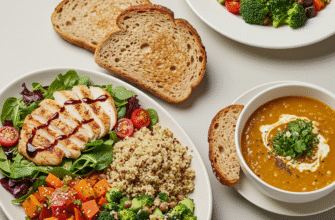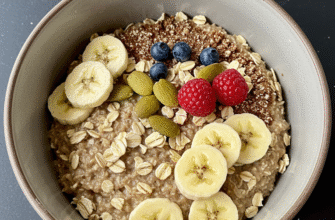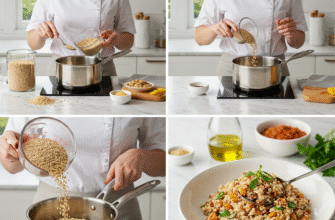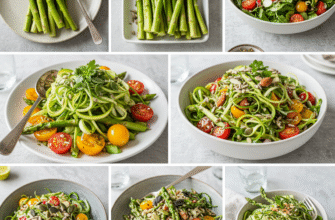Forget those heavy, calorie-laden dips for a moment and let’s talk about something truly wonderful: white bean dip. Creamy, satisfying, and endlessly adaptable, this humble concoction deserves a prime spot in your appetizer rotation or even as a sandwich spread. It’s the kind of food that feels both comforting and light, ready in minutes and packed with simple, wholesome goodness.
What makes white bean dip so special? It starts, naturally, with the beans. Cannellini beans are often the go-to choice, prized for their incredibly smooth texture and mild, slightly nutty flavor when blended. Great Northern beans work beautifully too, offering a similar profile. These legumes provide a fantastic canvas for a myriad of flavors, blending into a velvety puree that rivals dairy-based dips in richness, but feels much fresher on the palate.
The Magic of Simplicity: A Basic White Bean Dip Recipe
At its heart, white bean dip is incredibly straightforward. You don’t need fancy equipment or obscure ingredients. A food processor or even a sturdy blender will do the trick. Here’s a foundational recipe to get you started:
Core Ingredients:
- One 15-ounce can of cannellini beans, rinsed and drained (reserve a little liquid!)
- One or two cloves of garlic, roughly chopped (adjust to your taste)
- Two to three tablespoons of good quality extra virgin olive oil
- One tablespoon of fresh lemon juice
- Salt and freshly ground black pepper to taste
- A splash of the reserved bean liquid or water, if needed for consistency
The Process:
It truly couldn’t be simpler. Combine the rinsed and drained cannellini beans, chopped garlic, olive oil, and lemon juice in the bowl of your food processor. Season generously with salt and pepper – remember, beans need adequate seasoning to truly shine. Now, blend! Process the mixture until it becomes smooth and creamy. If it seems too thick, add a tiny splash of the reserved liquid from the bean can (this starchy liquid, sometimes called aquafaba, helps create a wonderfully smooth texture) or just a little water, blending again until you reach your desired consistency. Scrape down the sides of the bowl as needed to ensure everything is incorporated evenly. Taste and adjust seasonings – maybe more lemon for brightness, more salt, or another drizzle of olive oil for richness. That’s it! Your basic, delicious white bean dip is ready.
Unleashing Creativity: Flavor Variations Galore
The beauty of this basic recipe lies in its adaptability. Think of it as a blank slate waiting for your personal touch. Here are just a few ideas to get your creative juices flowing:
Herbal Infusions
Fresh herbs can completely transform the dip. Consider adding:
- Rosemary: A tablespoon of finely chopped fresh rosemary lends an earthy, slightly piney aroma that pairs wonderfully with white beans. A touch of roasted garlic alongside it is divine.
- Thyme: Fresh thyme leaves provide a subtle, savoury note.
- Parsley or Cilantro: For a brighter, fresher taste, blend in a generous handful of fresh flat-leaf parsley or cilantro. This works particularly well if you’re leaning towards Mediterranean or Latin-inspired flavors.
- Sage: A little fried sage, crumbled in, adds a sophisticated, autumnal touch.
Spice It Up
Don’t shy away from spices! They add warmth and complexity:
- Cumin: A teaspoon of ground cumin introduces a warm, smoky depth.
- Smoked Paprika: For colour and a lovely smoky flavour, smoked paprika is a fantastic addition.
- Red Pepper Flakes: If you like a bit of heat, a pinch (or more!) of red pepper flakes will do the trick.
- Za’atar: This Middle Eastern spice blend, typically containing thyme, sumac, and sesame seeds, adds incredible dimension.
Beyond the Basics: Tasty Add-Ins
Stirring in or blending additional ingredients can create entirely new dip experiences:
- Roasted Garlic: Instead of raw garlic, roast a whole head until soft and sweet, then squeeze the cloves into the food processor. This mellows the garlic flavor and adds incredible depth.
- Sun-Dried Tomatoes: Chop oil-packed sun-dried tomatoes and blend them in for bursts of intense, sweet-tart flavor and a lovely colour.
- Artichoke Hearts: Canned or jarred artichoke hearts (packed in water or oil, drained) blend beautifully, creating a dip reminiscent of spinach-artichoke dip, but much lighter.
- Olives: Kalamata or green olives, pitted and roughly chopped, can be pulsed in at the end for a briny kick.
- Roasted Red Peppers: Jarred roasted red peppers add sweetness and a silky texture.
Quality Matters: Using good quality extra virgin olive oil makes a noticeable difference in the final flavor of your dip. Since it’s a key component, choose an oil you enjoy the taste of on its own. Similarly, starting with good beans, whether canned or cooked from scratch, provides the best base texture and flavor. Don’t skimp on the salt and fresh lemon juice either; they are crucial for balancing the richness.
Achieving the Perfect Texture
While the basic method yields a great result, a few tricks can elevate the texture from good to sublime. As mentioned, reserving a tablespoon or two of the liquid from the can of beans (aquafaba) is a fantastic way to help emulsify the dip and make it extra smooth without adding excess oil. If you cook your beans from scratch, use some of that cooking liquid.
Ensure you process the dip long enough. Let the food processor run for a good minute or two, scraping down the sides occasionally, until it’s genuinely velvety. If, after blending, it’s still not quite smooth enough for your liking, a little patience and perhaps another small drizzle of olive oil or bean liquid usually does the trick.
Serving Your Masterpiece
Once you’ve perfected your dip, how should you serve it? The possibilities are endless!
- Classic Crudités: Crisp vegetables like carrot sticks, cucumber slices, bell pepper strips, celery sticks, cherry tomatoes, and radishes are perfect partners.
- Warm Pita Bread: Soft, warm pita bread (whole wheat or white) cut into triangles is a classic and irresistible choice.
- Crackers and Chips: Sturdy crackers, pita chips, or even tortilla chips work well.
- As a Spread: Use it as a delicious and protein-packed spread for sandwiches, wraps, or toast. It’s particularly good in veggie sandwiches or as a base layer on bruschetta topped with roasted vegetables.
- A Dollop on Top: Add a spoonful to grain bowls, salads, or even grilled chicken or fish for extra flavor and creaminess.
For presentation, swirl the top of the dip with the back of a spoon, drizzle with a little extra olive oil, and perhaps sprinkle with chopped fresh herbs, paprika, or a pinch of red pepper flakes.
Storing Your Dip
Homemade white bean dip stores well in an airtight container in the refrigerator for about 3 to 5 days. The flavors might even meld and improve slightly overnight. Give it a good stir before serving again, as it might thicken slightly when chilled. You may want to let it sit at room temperature for about 15-20 minutes before serving for the best texture and flavor.
So next time you’re looking for a simple, satisfying, and versatile dish, give homemade white bean dip a try. It’s a wonderfully blank canvas for your culinary creativity, offering a creamy, plant-based alternative that’s sure to become a favourite. Easy to make, easy to adapt, and always delicious – what’s not to love?








